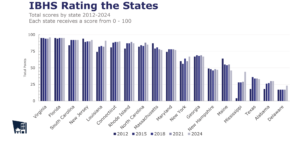Until recently, there was a relative lull in new mass tort events in the United States. This led to a sense among insurers that mass litigation was no longer the looming threat that it was in the 1980s and ’90s. In addition, to the extent it was seen as a threat, only Fortune 1000 companies were seen as at risk. The view was that insurers writing small and medium-sized enterprises (SMEs) were protected.
Executive Summary
Insurers that thought they were safe from mass tort claims because they focused on small and medium-sized enterprises (SMEs) as insureds are facing an ugly surprise: a trio of factors that is creating a "duty to defend" catastrophes, according to experts at Praedicat. Here, they note that litigation funding, suits implicating product retailers and distributors, and science that links chemical exposures and developmental injuries in children could easily create mass actions involving more than the 8,000-plus defendants for asbestos litigation, with major SME insurers footing defense billions for hundreds of these companies.But the proverbial bear of mass tort seems to be awakening, and the litigation landscape is changing in ways that might create mass litigation risks unique to SME insurers.
In particular, three patterns are emerging in United States litigation that are shifting the risk profile toward increasing risk to SMEs and their insurers.
The first two risks involve factors that will lead to increased defense costs. First, increased capital is becoming available to the plaintiffs’ bar to support litigation, with litigation funding emerging as an investment vehicle. Second, in part due to having more resources available, plaintiffs are implicating larger numbers of defendants, including retailers and distributors who were not commonly named in past actions. Both of these trends are leading to litigation that can last longer and drive higher expenses regardless of the outcome. SME insurers therefore face the dual threat of more policies responding to claims as more defendants are implicated, with larger defense cost burdens for each one due to the protracted litigation.


























